DODDRIDGE, Ark.,—A massive, high-tech machine sits incongruously in the far corner of a shed in rural Arkansas. This four-ton behemoth, whose delivery required use of a front-end loader, is the pride of Blackman Machining, a small shop tucked into an 80-acre spread near the Texas-Arkansas-Louisiana corner.
The machine is an Enshu Yuasa, a three-axis, multi-function, “computer numerical control” (CNC) unit that can cut precise threads and mill metal in three dimensions at the touch of a button.
In essence, the Enshu Yuasa is a high-tech hybrid, a combination of the many smaller machines – manual drill presses, lathes and the like – that Mark Blackman has long used to craft custom-made parts for local farmers, oil riggers and manufacturers.
“Manual machines are good,” says Blackman. “But as far as production, they just can’t match” the output of a CNC machine.
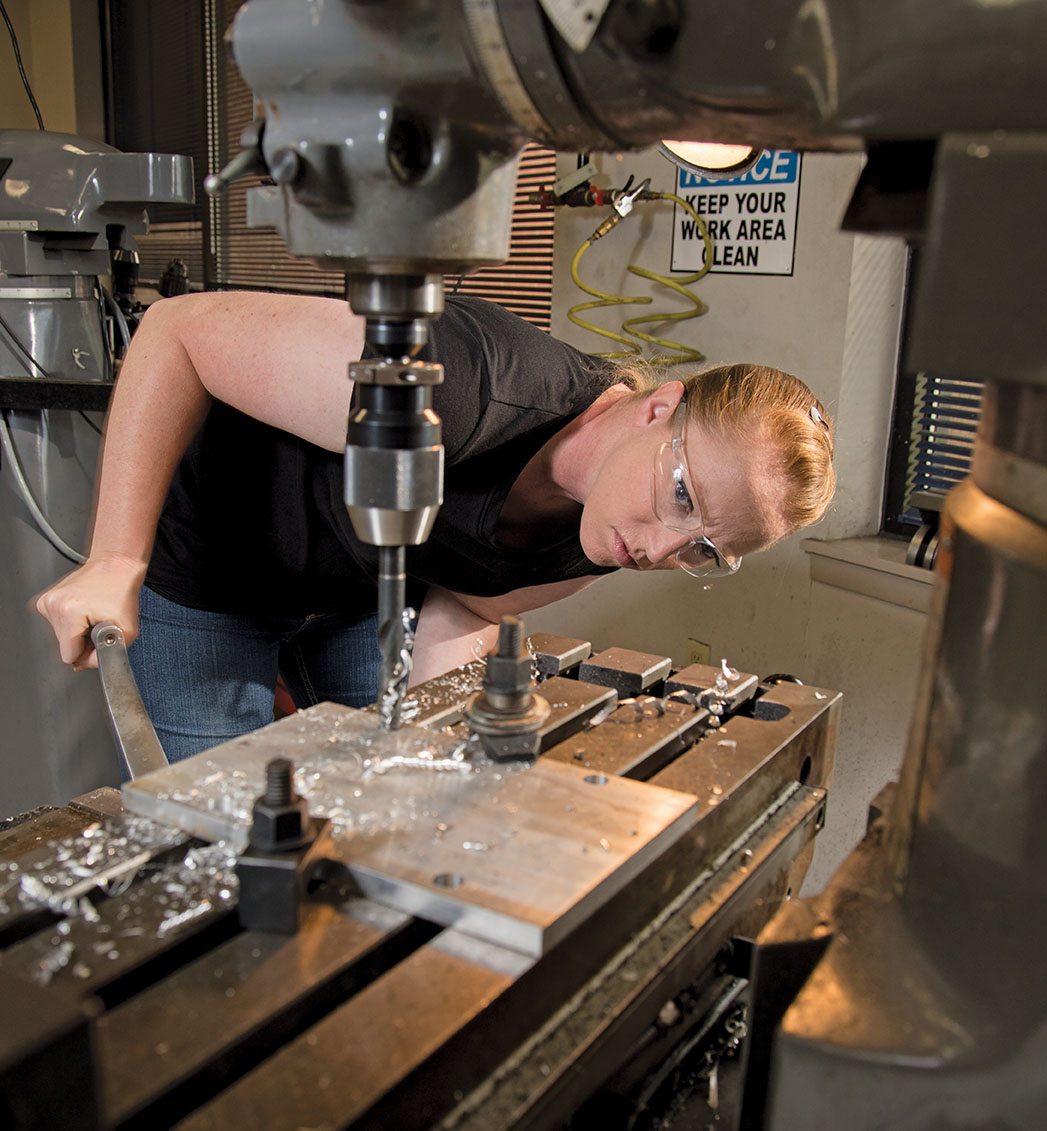
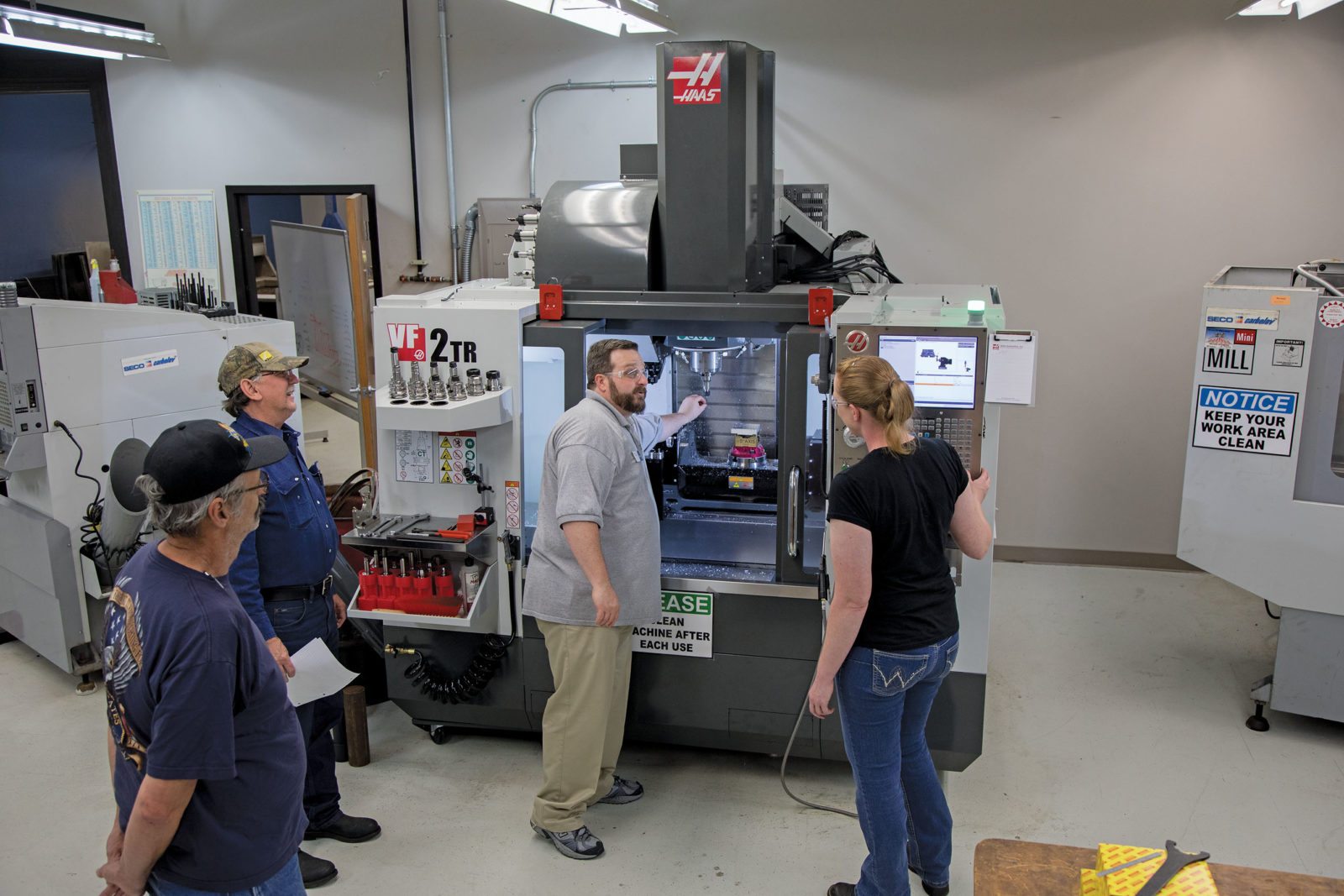
There’s a catch, though. Before a CNC unit can produce parts, its human operator must first program the cutting-edge tool with a sequenced string of coordinates that control its actions. That was the problem – not just for Mark, but for his business partner and wife, Miriam Blackman. After buying the Enshu Yuasa in 2014 and using it for two years, “we realized that neither one of us knew how to program it” in a way that maximized its potential, says Miriam, 39. “And that’s why I decided to come to TSTC.”
Self-starters welcome
TSTC is Texas State Technical College, a 10-campus system that operates quietly but efficiently by embracing competency-based education (CBE) and eschewing many of the trappings of conventional higher education.
“We don’t have sports teams and stuff like that,” notes Barton Day, provost of the TSTC campus in Marshall, an east Texas city of 23,000 near the Arkansas-Louisiana line. “But we do offer something that is as common-sense as CBE.”
Miriam Blackman had “never heard” of competency-based education when she set out to find a school near her home that could help her understand the nuances of the Enshu Yuasa machine. But the chance to learn in a competency-based program – one that recognizes practical experience, allows students to progress at their own pace and rejects grades in favor of direct assessments – resonated with a self-starter such as Blackman.
“I like how this program is set up,” she said in April, as she neared completion of her associate degree in computer-aided manufacturing (CAM), one of three competency-based programs on the Marshall campus. “Everything is hands-on. There is not a lot of desk time where you’re sitting there trying to study a book or memorize this equation or that date. It’s easier to learn that way. Setting your own pace, you can set your own schedule. And when you’re done you can move on to the next project.”
The matter-of-fact Day insists that CBE is “nothing new” in higher education – pointing out that the concept has been around for decades. Still, given its success at TSTC and other institutions, he says he finds it curious that the model hasn’t become a larger part of the postsecondary mainstream.
There’s certainly no such hesitancy in the TSTC system, which implemented its first competency-based program in 2014 and now features CBE on eight of its 10 campuses. In fact, TSTC may soon make competency-based education available on all 10 campuses across its entire range of classes – a catalog that begins with air traffic control, ends with welding technology and offers everything in between, from electrical line maintenance to facilities management.
Tucked into a stand of pines ten minutes southeast of the historic Harrison County Courthouse, the TSTC-Marshall campus is a sprawling mix of classrooms, contemporary laboratories and state-of-the-art industrial workshops. It is, in short, an ideal venue to advance competency-based learning.
“We are not teaching time, we are teaching skills,” explains Nathan Cleveland, one of two instructors in the college’s CAM program. “Everyone doesn’t learn at the same speed. Some students will run out in front, while others are a little slower.”
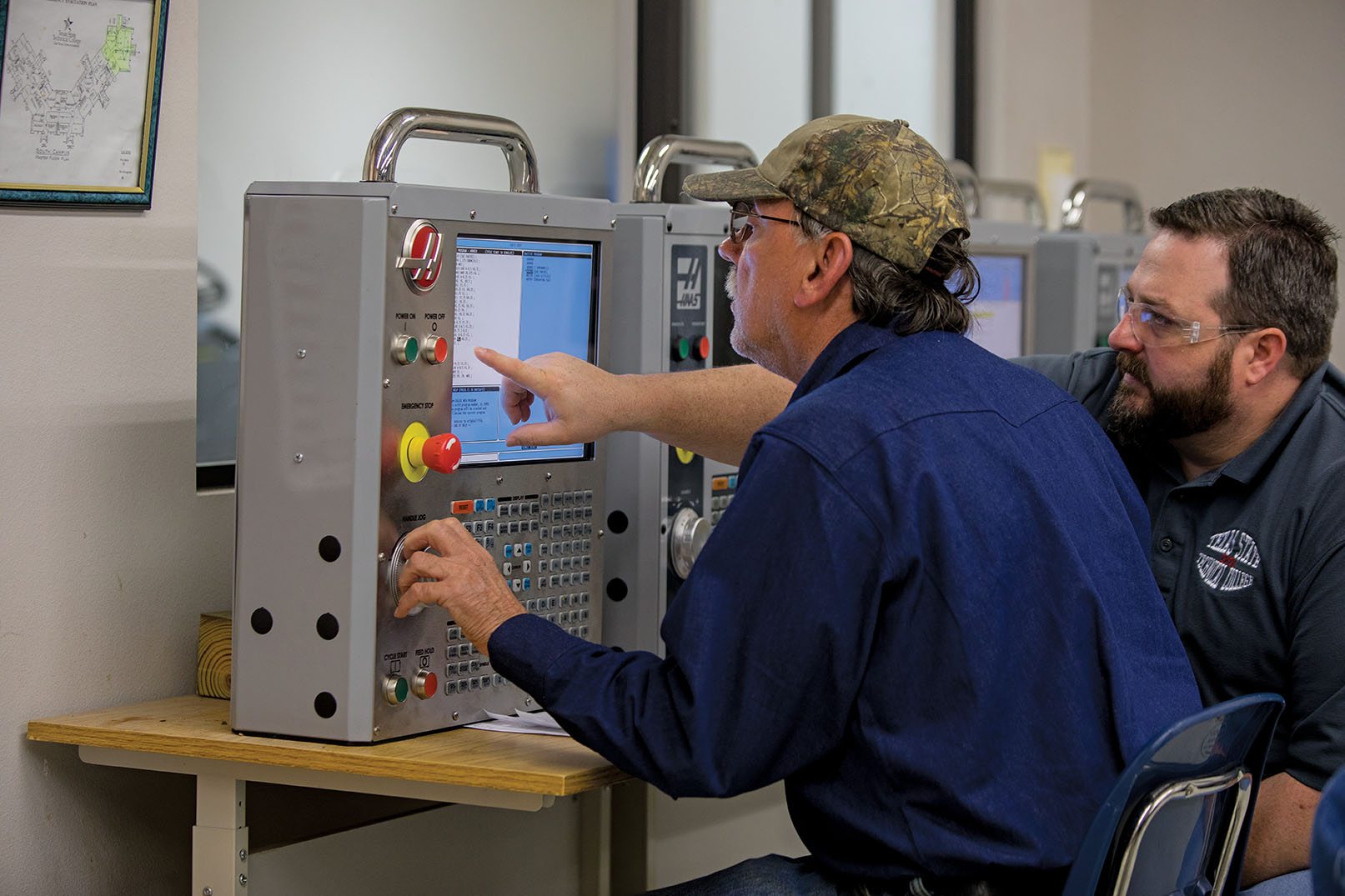
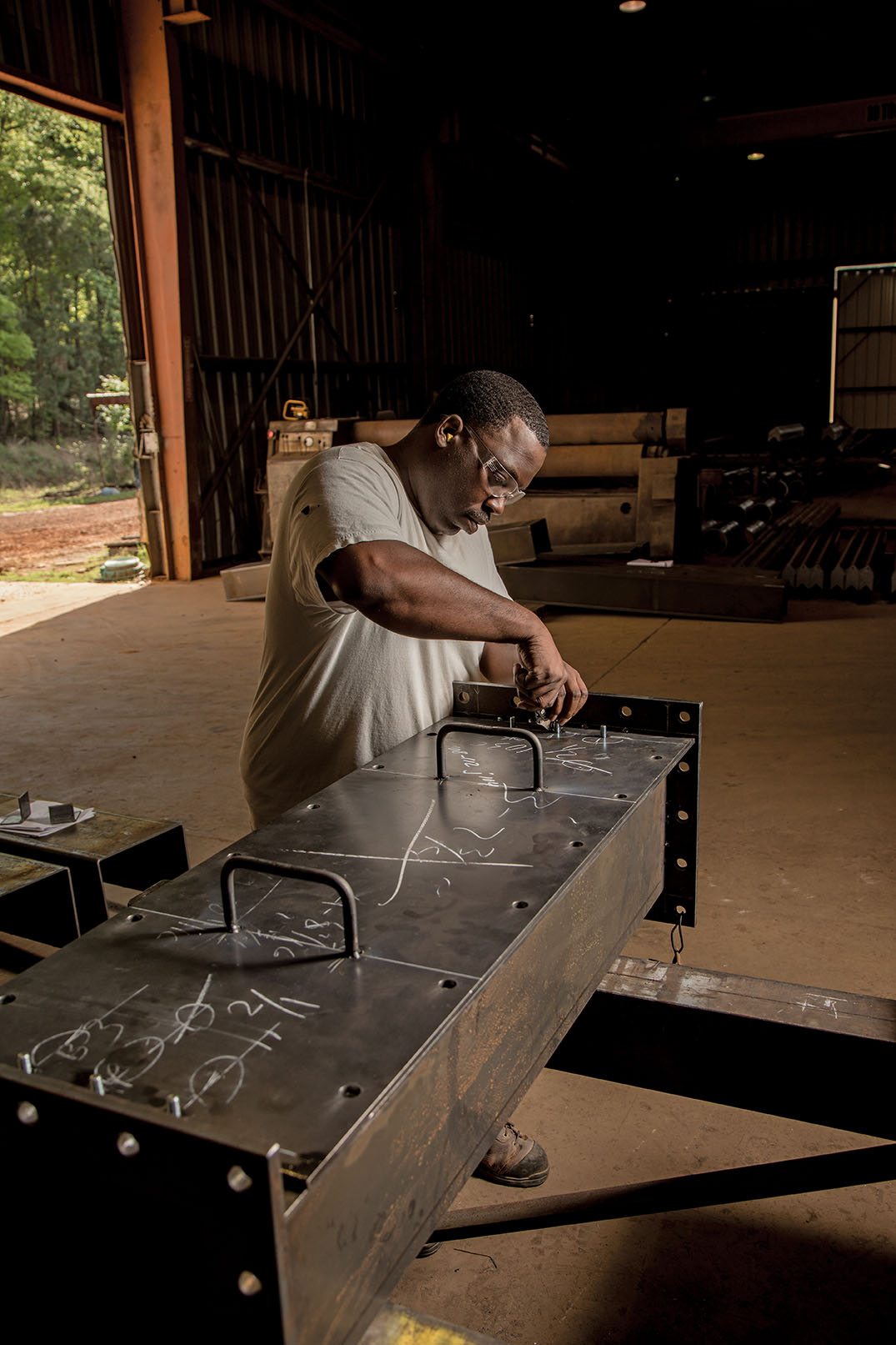
The roots of TSTC go back to 1965, the year Gov. John Connally (wounded two years earlier in the Dallas assassination of John F. Kennedy) established a technical institute affiliated with Texas A&M University on the site of a former Air Force base in Waco. The school separated from Texas A&M four years later, gradually split into separate campuses and was eventually granted status as an independent system by the state legislature.
To date, the TSTC system has awarded badges, certificates and degrees to more than 100,000 graduates, most of them older learners such as Doyle “Grayling” Edwards. Like many students, Edwards landed at TSTC through Trade Adjustment Assistance (TAA), a federal retraining initiative that helps “downsized” blue-collar workers develop the skills they need for 21st century manufacturing jobs.
Edwards came naturally to industrial labor. His father, also named Doyle, owned a machine shop and saw to it that the younger Edwards learned the trade while still in high school. After graduation, he joined the family business and forged a father-son partnership that lasted for 25 years, ending when Grayling accepted a job at a U.S. Steel Tubular Products plant. The steel industry pays well, but steady employment is sporadic in an industry buffeted by cheap imports. Laid off again in 2016 at age 63, Edwards decided it was time to launch a new career.
“The world is changing,” he reasons. “You have to learn in order to compete.” To Edwards, that meant accepting TAA funds to enroll in a TSTC-Marshall competency-based course in computer-aided manufacturing.
The senior Doyle Edwards might have questioned the choice.
“My daddy didn’t want a thing to do with computers,” says Edwards. “Except he didn’t just say ‘computers.’ He said ‘damn computers.’”
The younger Edwards insists he’s “old school,” too, though that assessment put him at odds with reality during a recent assignment in Nathan Cleveland’s CAM class. Hunched over a computer keyboard, Edwards pecked away, trying to simulate the programming of a high-tech, three-axis vertical mill in an adjoining workshop. He sighed audibly when the simulator flashed a red error message – a signal that beckoned the instructor to Edwards’ work station.
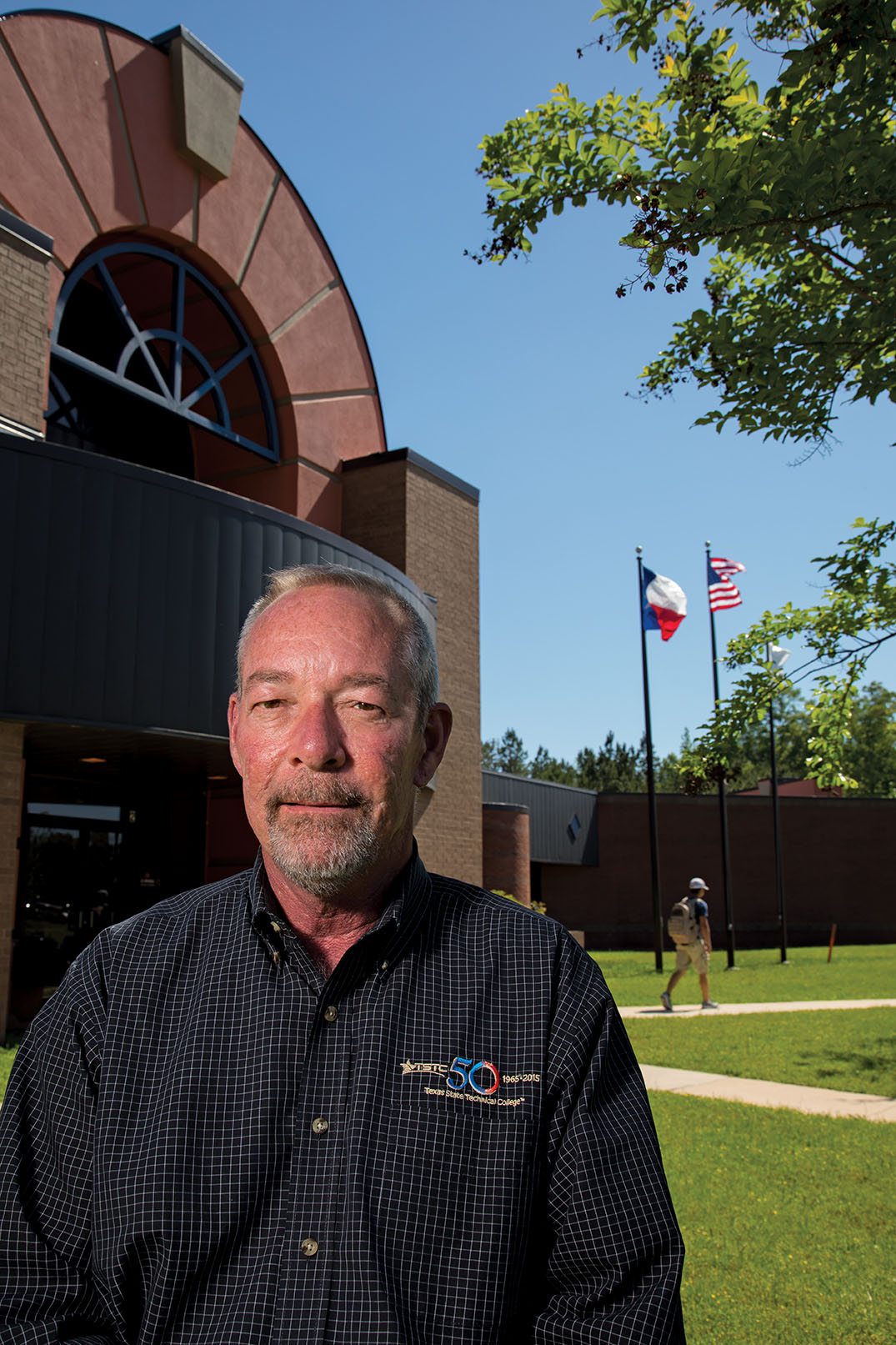
“You left the decimal off,” Cleveland said patiently, tracing a finger over a faulty coordinate.
“It’s a whole different world,” Edwards said later, taking a break from the daunting digital stream of numbers and coordinates. “And a lot of stuff to remember. This is one of those things learned better by repetition. You just have to keep going back over everything until you get it right.”
The ‘Go/No Go’ standard
The faculty and administrative staff at TSTC-Marshall borrow a military term to describe the way that Edwards is learning. It’s called “Go/No Go.”
“There is a strong correlation between military upgrade training and CBE,” explains Provost Day, a 30-year Air Force veteran. “(Both) are 100 percent task qualification. It’s a ‘Go/No Go’ standard when you need to complete a task. Either you can do it or you can’t. If you get to the end of task training and you can complete the task in a satisfactory manner, you move on to the next step. If you can’t (complete the task), you get retrained to the point that you can.”
TSTC has discovered that combining “Go/No Go” with CBE has created an unintended benefit: Fast-track students are doubling back to assist their struggling classmates.
“There’s a lot of collaboration,” acknowledges Miriam Blackman. “You have the students coming right out of high school. Then you have the students along my lines – those who joined the military, worked some jobs and are coming back to school to learn new skills. You have a lot of experiences, and they’re all mashed together. The newer students show you some things that you didn’t know, so it all works together quite nicely.”
The partnerships with fellow students became a key element in the competency-based process that helped Blackman learn the intricacies of the Enshu Yuasa – details that, as a young woman, she never could’ve predicted she would need. In fact, as a newly minted high school graduate in Michigan, Miriam saw just four options on her career path: teacher, secretary, nurse or housewife. The idea of one day operating a state-of-the-art manufacturing tool didn’t even occur to her.
Unsure how to proceed, she enrolled in a small Christian school with no specific objective in mind. When the funding for tuition dried up during her sophomore year, she left college and joined the Air Force. While serving, she combined active duty with academics, taking online courses that earned her an associate degree in applied sciences and a bachelor’s in business administration.
In 2011, as her military service drew to a close, Miriam’s future came into focus – personally and professionally – with her marriage to Mark Blackman and the decision to run that Texarkana machine shop as a husband-and-wife operation.
It was a solid alliance. From Mark, Miriam learned the basics of machining. In Miriam, Mark gained an associate with a keen business sense. As the business prospered, though, it became clear that an investment in high-tech equipment was necessary for the couple to meet increasing demand for their services. And so, the Blackmans bought the used Enshu Yuasa and, a year later, installed new software to improve its productivity.
The new software helped, but the Blackmans realized they still had a lot to learn about CNC programming before they could use the machine to its full potential. Miriam addressed that problem by enrolling in an advanced manufacturing course on the TSTC-Marshall campus an hour from their home.
The staff and instructors she encountered at TSTC-Marshall were not academicians.
“We’re not teachers, and we weren’t trained to be teachers,” says Cleveland. Some, like Day, brought a military background to campus; many others came to TSTC from manufacturing jobs.
For instance, Cleveland came to education from positions as a production manager at a concrete production plant and a shift supervisor for an area manufacturer. Both jobs paid better than teaching, but Cleveland accepts the pay cut as a tradeoff for the satisfaction his new job affords: seeing students arrive at TSTC with rudimentary skills and graduate into well-paying, high-tech jobs at local factories and machine shops.
The ties between the college and area industries – including business officials seated on the campus advisory board – give TSTC-Marshall students another foothold in the job market. The college also has a self-imposed financial incentive to move students into the workforce: A money-back guarantee for graduates who aren’t snapped up by local employers. “We’re putting our money where our mouth is,” says Randy Haley, associate vice president of student learning.
TSTC-Marshall has yet to pay out on that guarantee.
On the recruiting trail
Of course, with any college or program, one key to success is to recruit students who represent a “good fit.” That imperative is magnified in CBE, where self-motivation can be critical. At TSTC, it is Wayne Dillon who plays a major role in getting candidates – young, old and in-between – to come to the Marshall campus. Rare is the school official, corporate board member or person on the street who dodges entreaties from the gregarious, mustachioed Dillon about the virtues of TSTC-Marshall and competency-based education – the program he coordinates for the entire TSTC system.
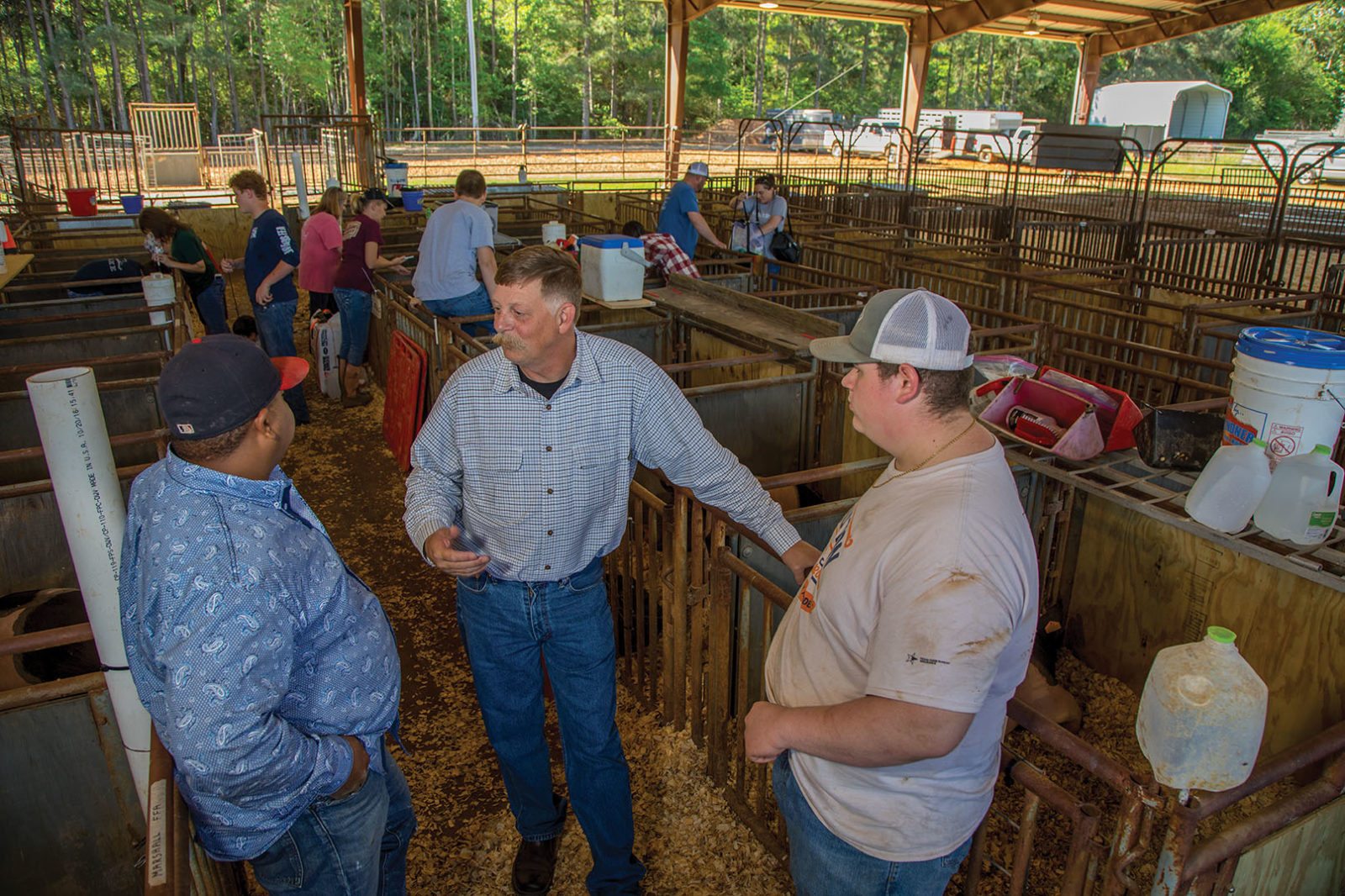
The first week in April found Dillon attending Harrison County Farm City Week – the annual showcase for Future Farmers of America and 4-H members to demonstrate their agricultural proficiency and show their livestock. Dillon is a Farm City Week regular, showing up each year in multiple capacities of judge, confidante, mentor and advocate for TSTC-Marshall, the school where he landed 16 years ago, at the end of a long career with the Kansas City Southern Railroad.
“I recruit heavily here,” Dillon said, standing among a dozen grunting hogs in the Marshall City Arena. “You’ll see a lot of these kids walking the halls of TSTC.”
However, Farm City Week didn’t produce Laurence Johnson, the standout recruit whom Dillon persuaded to join the college’s very first CBE program – in computer-aided manufacturing – three years ago. Instead, Dillon found Johnson in a TSTC-Marshall welding course and quickly orchestrated a transfer to the CAM class taught by Nathan Cleveland.
The son of a teacher who insisted that her six children learn to read by age 3, Johnson left east Texas after high school to attend the University of Nevada-Las Vegas. Law school would have been the next stop had all gone according to plan. But Johnson foundered at UNLV, dropped out and wound up in the Army, where he served as a medic. Years later, having endured “some really bad stuff” during his service, Johnson’s re-entry to civilian life brought with it depression and PTSD. Finally, in 2014, at age 39 and still uncertain about where life would take him, Johnson found equilibrium at the college 17 miles from his home in Jefferson.
“TSTC came along at exactly the right time,” he recalls. “Sometimes you go through a funk and you can’t see what is right in front of you … (and skilled machining) was right in front of me. I just didn’t see it.”
At TSTC-Marshall, Johnson discovered the support system that had eluded him since leaving the military. He credits the faculty for “answering questions for everyone, even if you don’t have a class with them. They not only helped me with learning, they were counselors.”
A “voracious reader” partial to tomes about economics, Greek history and mythology, the self-taught Johnson says he loves “learning things that don’t come easy.” Like Miriam Blackman, he seemed almost destined to excel in self-directed competency-based education. Johnson cruised through CBE, only to encounter a setback when an early job offer was not commensurate with his TSTC training.
“I didn’t want to run a saw,” he says of the entry-level position. “But then I remembered what (Cleveland) told me about getting your foot in the door.”
Johnson didn’t operate the saw for long. Hawk Fabrication of Jefferson quickly recognized the adaptability of the new employee and elevated Johnson into positions that matched his skill set.
The bouts of depression and anxiety a thing of the past, Johnson, now 43, earns $16 an hour as a high-tech machinist. “TSTC taught me I can manage anything,” he says.
Blackman was similarly confident last April as she neared the end of a seven-month sprint through computer-aided machining – a class that was already paying real-world dividends. “I’m able to take the stuff I learn here and apply it directly to our business,” she says. “Using our CNC machine, I can write the code and cut our own parts for equipment we’re working on or pieces we’re fixing. Everything here directly correlates to what I do in our personal business.”

